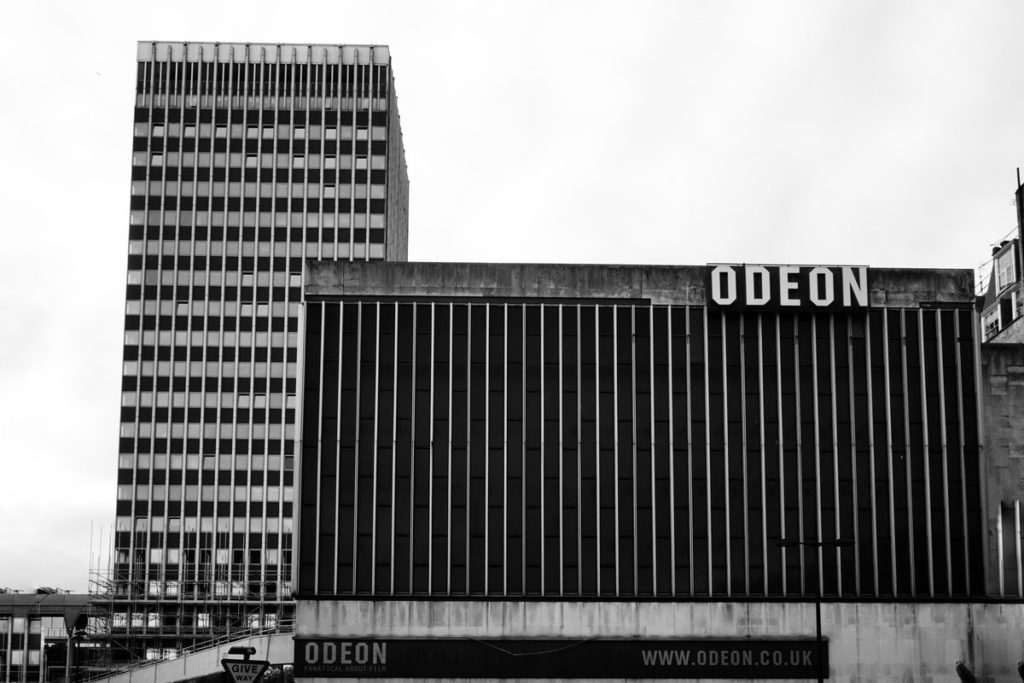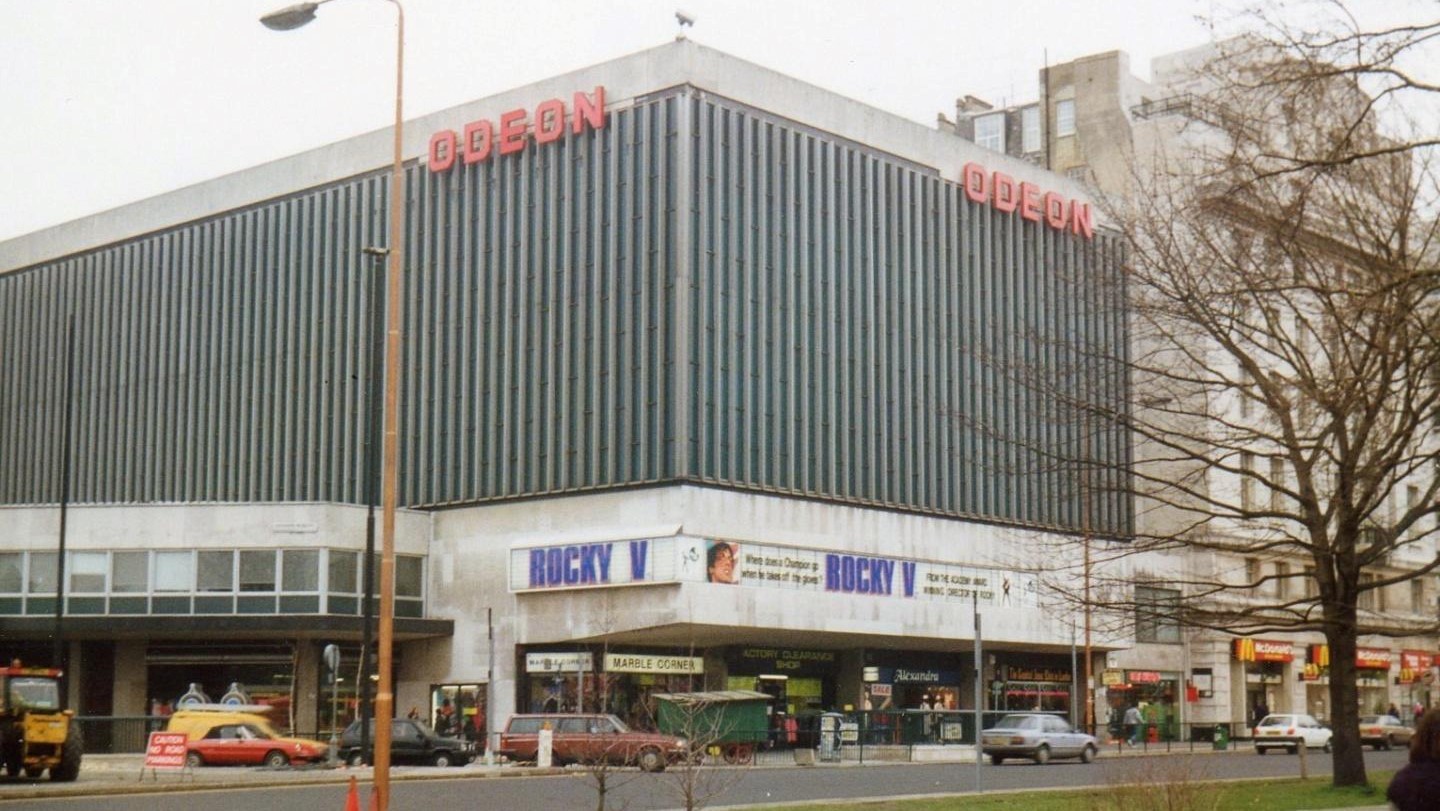From its grand opening in 1928 to its eventual closure in 2016, Odeon Marble Arch (formerly known as the Regal) stood as a remarkable cinema in the heart of London. Located opposite Marble Arch, at the top of Park Lane with its main entrance on Edgware Road, this iconic establishment played a pivotal role in the city’s cinematic history. Let’s delve into the story of Odeon Marble Arch, exploring its architectural splendor, notable screenings, and eventual transformation into a multiplex.
Nestled in a prime location, Odeon Marble Arch commanded attention from its inception. Over the years, it became renowned for its majestic architecture, captivating film offerings, and technological advancements that drew moviegoers from near and far.
The Regal Era (1928-1945)
On November 29, 1928, the Regal cinema opened its doors to the public. It made an immediate impact with its awe-inspiring 100-foot high Portland stone facade, making it a standout addition to London’s West End. Inside, the auditorium boasted an enchanting atmosphere with Romanesque motifs and ornate faux decor. Adding to the cinematic experience was the Christie organ, the largest theatre organ ever built outside the U.S., which resonated through the halls with its 2,514 pipes. The Regal also featured a 32-note carillon, the only organ-operated carillon in the United Kingdom, and an array of special sound effects to accompany the films.
Despite its early success, the Regal faced changes in ownership. Within six months of its opening, it was taken over by ABC Cinemas, who operated it until early January 1945 when Odeon Cinemas acquired it. The cinema underwent refurbishments under the new owners. Unfortunately, just before its planned reopening, the Regal suffered damage from one of the last V-1 flying bombs to hit London. It remained closed until September 1945 when it was reborn as the Odeon Marble Arch. The newly reopened cinema continued its legacy as a first-run house, delighting audiences with the latest films.
Faded Glory and Demolition (1964)
As the 1960s dawned, the interior of Odeon Marble Arch started to show signs of wear and neglect. The cinema’s film runs dwindled to minor circuit pictures or even dubbed foreign films, leaving its large house unfulfilled. Recognizing the need for change, the decision was made to close Odeon Marble Arch on March 22, 1964, with the screening of “The Long Ships.” Shortly thereafter, the original Regal building was demolished, making way for an office block and a modern cinema that could accommodate the new widescreen formats.
The architects behind the transformation were T.P. Bennett and Son. The new cinema, positioned above Marble Arch tube station, featured innovative structural shock absorbers to counteract vibrations from passing trains that could disturb the film projection.

The Grand Odeon Marble Arch (1967-1996)
The unveiling of the grand Odeon Marble Arch took place in 1967. With its completion, it became the largest cinema constructed in the post-war years. The magnificent screen, measuring 75 feet by 30 feet, with a depth of curvature reaching 17 feet, stood as the largest of its kind in the country. The projection, level and beaming from the rear of the stalls, ensured an even and immersive image for the audience.
The primary purpose of Odeon Marble Arch was to showcase films in various 70mm processes, most notably Dimension 150. This allowed for a truly spectacular visual experience. Surprisingly, the cinema opened on February 2, 1967, with a Gala Premiere of “A Funny Thing Happened on the Way to the Forum,” a 35mm film in standard widescreen format. This initial presentation ran for seven weeks, followed by other 35mm screenings, including the World Premiere of “Robbery” on September 21, 1967.
It was not until October 16, 1967, that the new Odeon Marble Arch hosted its first 70mm roadshow presentation. The Royal World Premiere of “Far from the Madding Crowd,” in the presence of Princess Margaret, marked a significant milestone for the cinema. This was soon followed by another Royal World Premiere on December 12, with HM Queen Elizabeth II attending the screening of “Doctor Dolittle.” Both films were presented in glorious 70mm and delighted audiences. Subsequent 70mm roadshow presentations included “Finian’s Rainbow,” “Hellfighters,” and revivals of “West Side Story” and “Gone With the Wind.”
The auditorium, accommodating 1360 seats, featured a raked circle at the front and rear, along with stalls stepped towards the rear. This design ensured excellent sight-lines from every vantage point. The side walls were adorned with textured fiberglass paneling, partially concealing gold glass cloth backing. Variable lighting installed in the outer rim of the ceiling allowed for different colored schemes to create a mesmerizing ambiance during intermissions. The screen itself was revealed by a single set of curtains, heightening the anticipation before each screening. Access to the foyer areas was provided via escalators, and the upper foyer even featured a charming fishpond. To enhance the viewing experience, adjustments were made to the screen’s curvature after the revival of “Lawrence of Arabia,” allowing for a less distorted view of the vast desert landscapes. In the 1990s, digital sound systems were installed, including ceiling speakers, further elevating the cinematic immersion.
Conversion into a Multiplex (1997-2016)
In January 1997, Odeon Marble Arch underwent a significant transformation. It reopened as a five-screen multiplex, skillfully converted within the existing space. The original circle was divided into two interlocked screens, while the rear stalls received a similar treatment. These alterations provided room for additional screens while maintaining a sense of continuity with the past. Another auditorium was positioned in the former front stalls area, preserving some of the 1960s sidewall paneling. The screen in this new auditorium occupied the same location but was slightly reduced in size to accommodate the adjusted sightlines required for the smaller space.
The decision to convert Odeon Marble Arch into a multiplex was met with resistance from the public. Many expressed their concerns and disappointment at losing such a spectacular venue. Notably, screenwriter Peter Briggs, known for his work on “Hellboy,” used his platform to voice his objections through the pages of Time Out, a popular London weekly listings magazine. Despite the outcry, the conversion proceeded, and Odeon Marble Arch embraced a new era.
Digital Transformation and Closure (2011-2016)
As technology advanced, so did the cinema’s projection systems. In March 2011, Odeon Marble Arch bid farewell to its 35mm projectors and CP65 sound processors. It fully embraced digital projection in all five screens, utilizing NEC digital projectors equipped with Doremi servers. Screen one, however, retained its Victoria 8 35mm projector and Cinemecanica non-rewind system for occasional 35mm showings. Unique Digital played a crucial role in managing the cinema’s digital network, overseeing operations remotely from their network operations center in Norway through the Rosetta Bridge Theatre Management System.
The final chapter in the history of Odeon Marble Arch began on May 8, 2016. The cinema closed its doors, marking the end of an era. Later that year, the beloved building was demolished, making way for future developments.
Initially, plans were made to include a replacement multi-screen cinema within the new development. However, in October 2021, developer Almacantar announced that these plans had been dropped, leaving behind memories of the cinematic marvel that was Odeon Marble Arch.
Conclusion
Odeon Marble Arch holds a significant place in the hearts of cinema enthusiasts, representing a golden era of film exhibition in London. From its early days as the Regal to its transformation into a grand cinema showcasing premieres and roadshow presentations, Odeon Marble Arch served as a hub of entertainment. Despite its eventual conversion into a multiplex and ultimate closure, its impact on London’s cinematic landscape remains undeniable. The memories and stories of Odeon Marble Arch continue to reverberate, reminding us of a bygone era in the city’s rich cultural history.
FAQs
- When did Odeon Marble Arch first open its doors? Odeon Marble Arch, originally known as the Regal, opened on November 29, 1928.
- What were some of the unique features of the Regal building? The Regal boasted a 100-foot high Portland stone facade and an atmospheric-style auditorium with Romanesque motifs. It also housed a Christie organ, the largest theatre organ outside the U.S., and various special sound effects.
- What led to the closure and demolition of the original Regal building? By the early 1960s, the cinema’s interior had deteriorated, and its film offerings had declined. On March 22, 1964, the Regal closed with the film “The Long Ships” and was subsequently demolished to make way for an office block and a new modern cinema.
- What were some of the notable film premieres at the Odeon Marble Arch? The Odeon Marble Arch hosted premieres such as “Far from the Madding Crowd,” attended by Princess Margaret, and “Doctor Dolittle,” attended by Queen Elizabeth II. It also featured special screenings and revivals of films like “West Side Story” and “Gone With the Wind.”
- Why was the Odeon Marble Arch eventually converted into a multiplex? The conversion into a multiplex was driven by the need to adapt to changing audience preferences and the demand for more screens within the existing space. Despite public outcry, the conversion was completed in 1997.

